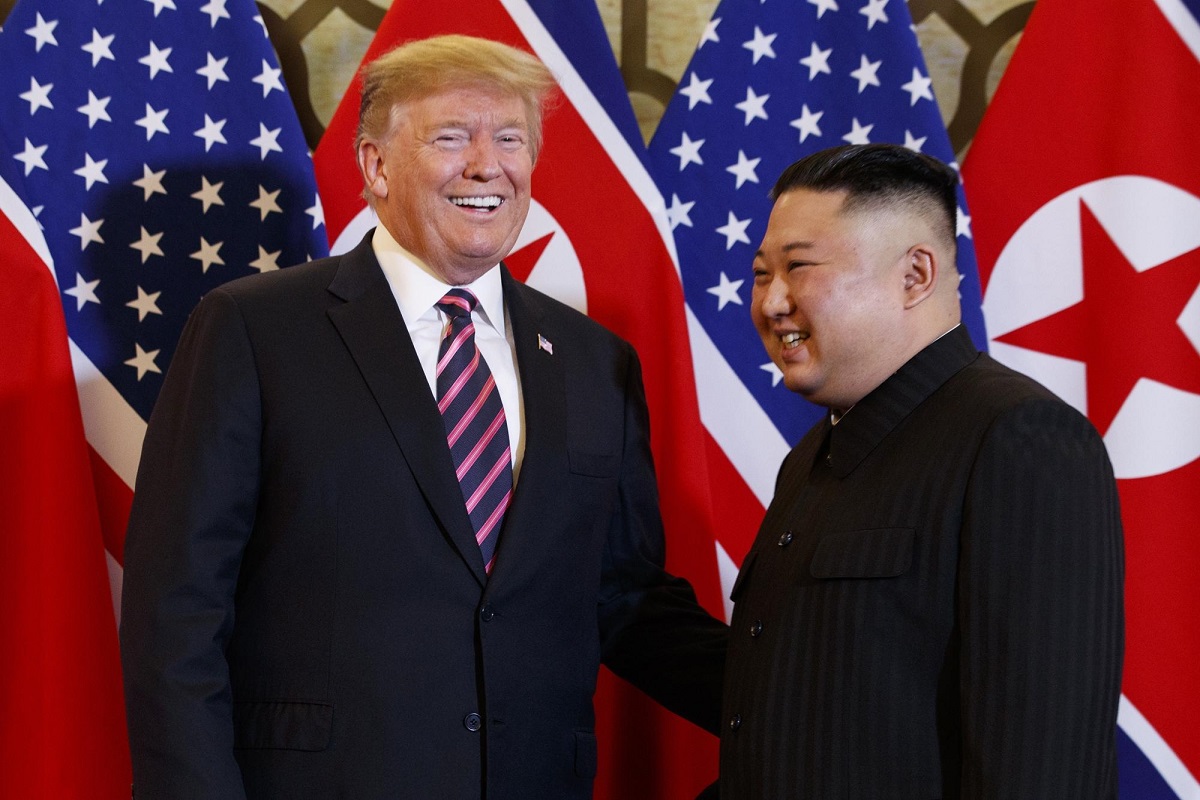Trump makes triumphant return to Madison Sq Garden
US President-elect Donald Trump has made a triumphant return to the Madison Square Garden (MSG) with his entourage of high-level nominees and advisers to watch a mixed martial arts championship.
Yet 24 hours after the North Korean President’s reappearance in public, the clash of shields must be rather intriguing.

US President Donald Trump and North Korean leader Kim Jong-un (Photo: IANS)
The whereabouts of Kim Jong-un for three weeks in April will continue to dominate the international narrative for sometime yet even after his reported public appearance last Saturday.
Sunday’s exchange of gunfire between North and South Korea has convulsed the Demilitarized Zone yet again. The incident has happened after North Korea reported its leader’s first public appearance in about 20 days amid intense speculation about his health.
Theoretically, there need be no link between Kim’s reappearance and the booming of guns on either side of the historical divide. Paradoxically, however, this has made the puzzle still more intractable.
Advertisement
Clothed in a Mao jacket ~ the sartorial preference is significant ~ Kim’s photograph at the inauguration of a phosphate fertilizer factory in Suchon would reaffirm that he is not under the weather, after all.
Yet 24 hours after the North Korean President’s reappearance in public, the clash of shields must be rather intriguing.
Neither Pyongyang nor Seoul has been explicit so far as details are concerned. South Korea’s military said its troops exchanged fire with North Korea along their tense land border. The Joint Chiefs of Staff in Seoul said North Korean troops fired several bullets at a South Korean guard post inside the heavily fortified border between the two countries at 7.41 am on Sunday.
The North Koreans apparently fired by accident.
That said, contextualised with the volatile character of the DMZ, it may not be easy for the comity of nations, least of all the United States and China, to readily concur with this argument. South Korea fired two rounds in response after issuing a warning broadcast, the military said in a statement.
“We are taking actions via inter-Korean communication lines to grasp the detailed situation and to prevent any further incidents. And we also maintain a necessary readiness posture,” it said.
It is pretty obvious that with Kim back in the saddle, both the North and the South are in the process of sharpening their weaponry. The sudden exchange of gunfire was arguably a symptom of the chronically tense Demilitarized Zone.
The two Koreas are split along the 248-kilometre-long, 4- kilometer-wide border region that was originally created as a buffer. Yet over time, the DMZ has become the world’s most heavily fortified border.
An estimated 2 million mines are concealed inside and near the DMZ, which is also guarded by barbed wire fences, tank traps and combat troops on both sides. In late 2018, the two Koreas began dismantling some of their frontline guard posts and removing mines from the DMZ as part of steps to reduce tensions.
The efforts had stalled amidst a deadlock in nuclear negotiations between Kim and Donald Trump over Pyongyang’s refusal to give up its arsenal in exchange for lifting economic sanctions. It is fervently to be hoped that the clock has not been turned back on Sunday amidst the global catastrophe. The scenario would have been radically different had the exchange of gunfire happened during Kim Jong-un’s absence.
Advertisement